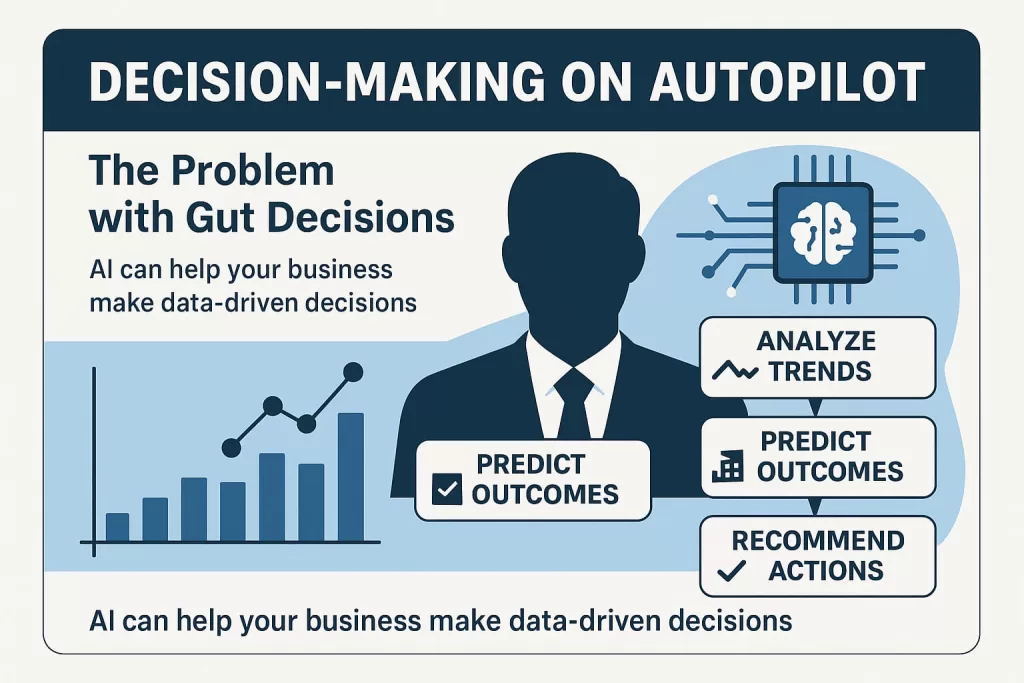Table of Contents

The Problem with Gut Decisions
Most people rely on intuition, guesswork, or incomplete data to make decisions. That might have worked in a slower world. Not anymore.
Now, the speed and accuracy of your decisions can make or break your business. AI helps you move from gut-feel to data-driven — without drowning in spreadsheets.
What AI Does Better
AI doesn’t get tired. It doesn’t forget. And it doesn’t bring bias (unless you feed it biased data). Here’s what it can do for decision-making:
- Analyze trends in large datasets faster than a human ever could
- Detect anomalies that signal risk before they explode
- Predict outcomes using historical patterns
- Recommend actions based on probabilities, not opinions
You don’t need to build a neural network. You just need to connect the right tools to your data.
Predictive Dashboards
You’ve seen dashboards with charts. AI takes it further.
- What happened — Basic dashboards
- Why it happened — Diagnostic AI
- What will happen next — Predictive AI
- What should we do — Prescriptive AI
Tools like Tableau, Power BI, and Google Looker can integrate AI models to answer all four layers.
Scenario Simulation
Want to test “what if” questions without blowing up your business?
AI can simulate different inputs and show you the probable outcomes:
- What happens if we raise prices by 5%?
- How many leads do we need to hit ₦10M in revenue?
- What’s the best time to launch a campaign?
Use tools like Causal, Forecast Forge, or even Excel with GPT integrations to run simulations.
Decision Confidence + Human Override
AI isn’t perfect. But it can tell you how confident it is.
- If a model says “80% chance this customer will churn,” you can act fast.
- If it’s only 52%, you might want a human to double-check.
Think of AI as your junior analyst. It works fast, flags issues, and suggests next steps. You still get the final call.
Key Takeaways
- AI helps you make faster, smarter decisions with less guesswork.
- Predictive dashboards add serious value over static charts.
- Scenario simulations let you test ideas without risk.
- Always combine AI confidence scores with human judgment.
- You don’t need deep tech—just connect your data to the right tools.
Action Points
- Identify three recurring decisions you make weekly.
- Pick one decision that consumes the most time or causes the most stress.
- List the data sources involved in making that decision.
- Try a tool like Causal or Google Sheets + GPT to simulate the decision flow.
- Create a simple dashboard or report that updates automatically using AI.
- Set rules: When confidence is over 75%, act. Under 60%, review manually.
Read my other Artificial Intelligence related Articles
Dr. Oluwaseun Ogunmola
https://linktr.ee/seun.ogunmola


